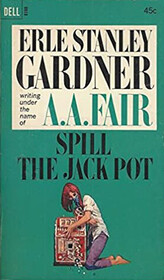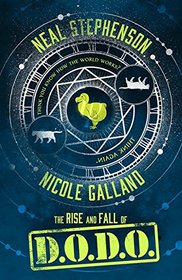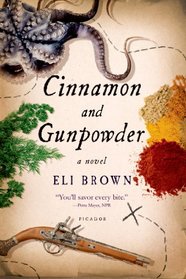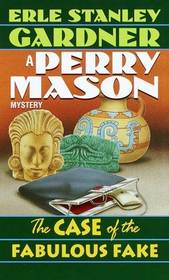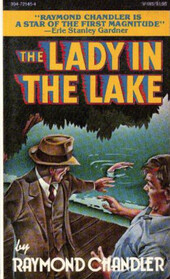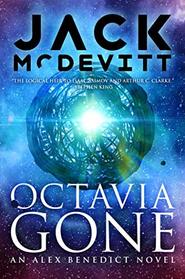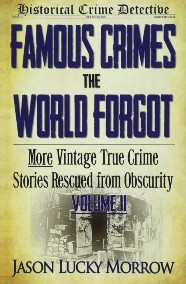
by Jason Lucky Morrow
Jason Morrow created a website in 2013 called HistoricalCrimeDetective.com. His goal was (and is) to study and report sensational stories that swept across America years ago but are now lost in time. Another premise of his site is to avoid cases rehashed many times before (such as Jack the Ripper, Andrea Yates, etc.).
This author tells eight cases in great detail (averaging about 12,000 words per story). He has combed newspapers, culled any available photographs, and reviewed trial documents. All this is to offer his readers a complete picture of all known information about the cases selected.
This reader came away thinking that the ‘good ole’ days’ weren’t all that safe and serene. Evil has been with the human race for a long time. In this particular volume (this is a series), the police caught all of these perps. What sets Mr. Morrow’s book apart from others is that he tries to capture the mood of the times. He often uses direct quotes from sources, trying to set the scene. Additionally, the variety of crimes is startling.
In the first chapter, a brother and sister, each getting ready for their marriage on subsequent days, were both poisoned the day before the first wedding. Their deaths were extremely excruciating and drawn-out. The near-simultaneous deaths of two siblings sent the country into a tailspin. An early suspect was Susie Below’s old boyfriend; however, things soon moved closer to home.
Ivy Giberson tells her story of the robbery and murder of her husband in Chapter Two. Unfortunately, this was the third time two men in thirteen years had robbed Ivy. Something seemed fishy to the police. In Chapter Three, Catherine Clark was very lonely. Her first marriage had been unhappy; Catherine was a bit portly, and she was desperate for a loving relationship. She got involved in a national matrimonial service popular at the time (her case single-handedly killed this avenue to find new love). Convinced to bring her $2000 savings with her to meet her new fiancee, Catherine traveled three thousand miles to meet her murderer. Her fiancee (the murderer) was married with five children.
Things turn even more grim in Chapter Four. Two sisters, both educated and accomplished, were killed by a maniac. They were eleven miles from their parent’s home when they were shoved off the road by a car behind them. Although it didn’t help, their father was an assistant police chief. In the week in 1930, when the widely-known, musically-gifted women died, they were the most famous sisters in America.
The story in Chapter Five is even more stunning. A multi-time ex-con killed four men in cold blood for $40 to continue his drinking spree. This is the first story I’ve read about American Basques (who immigrated from Spain) and became wealthy ranchers in Nevada. One of the murdered men was Basque, and the tight-knit community wanted blood. At that point, Luther Jones found himself between the gas chamber and a Basque lynching party.
In the 1940s, a redheaded woman was often called a tomato. Chapter Six is the complex case of an escaped serial killer who preferred redheads. The Charming Casanova plied his sensational murders from New Orleans to Chicago and beyond. The police were baffled because there were no marks on either redhead and no signs of violence anywhere. Found in a bathtub with six inches of water, neither woman had water in her lungs. By the time of the third murder of a redhead, Joseph Medley was Public Enemy Number One for the FBI.
Chapter Seven recounts the car bomb death of a wealthy San Angelo, Texas, socialite. Residents heard the bomb a mile away, and windows shattered for blocks around the Weaver family’s mansion. Stories about the shocking homicide swept across the US and Great Britain. Eventually, the trial would be the first live televised murder trial in US history.
The final chapter is about the stiletto slayer of Milwaukee in 1966. This serial killer stabbed young girls with a seven-inch stiletto. An altar boy (and brother to one of the victims) found his sister’s murdered, half-nude body lying next to the church (where he was serving as an altar boy) ten minutes before mass started. By this murder, Milwaukee police were sure they had a serial killer (although that term wasn’t coined until 25 years later). This was a huge national story that rocked the Milwaukee community.
In 2018, Jason Morrow’s volume of this book earned the Gold Medal for the True Crime Category. The Independent Publishers Book Awards (the IPPYs) are among the highest awards a new or seasoned author can receive.

